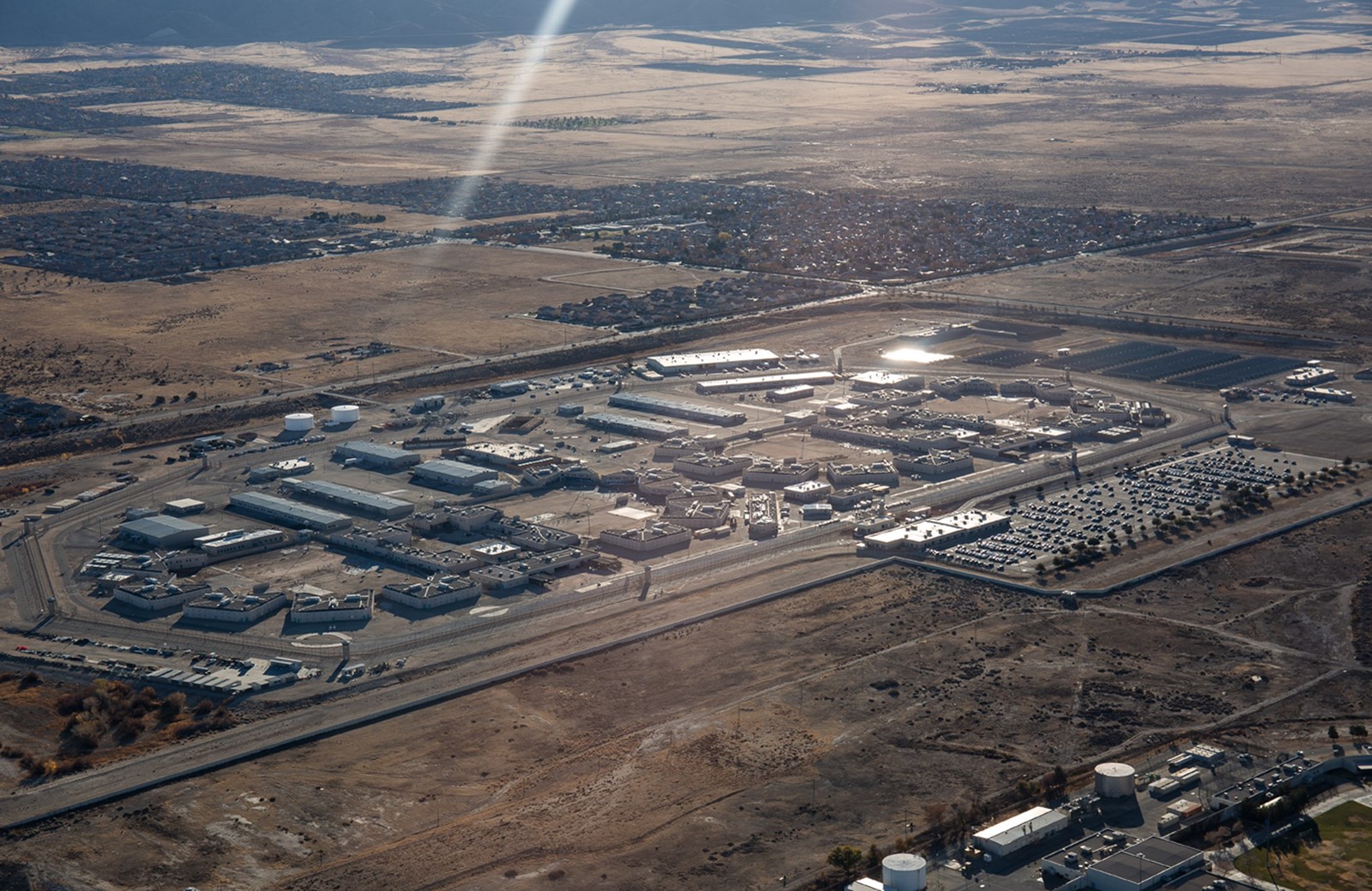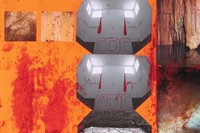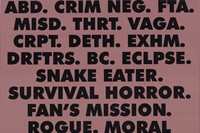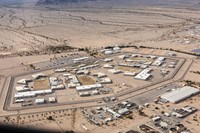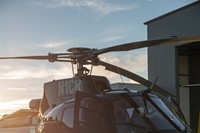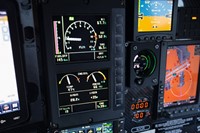This article is published as part of our #CultureIsNotCancelled campaign:
For his 2019 exhibition DAMNATION at Sprüth Magers, LA, Sterling Ruby presented a 33-minute video projection titled STATE. The piece compiles years’ worth of aerial footage of California’s prison system, which encompasses 35 adult institutions. The idea of incarceration and the USA’s prison system is something the multidisciplinary artist explored extensively for 15 years, with exhibitions between 2005 and 2008 before returning to the subject for DAMNATION; Ruby once described “Supermax penitentiaries as being an allegory for a contemporary hell ... an inaccessible parallel world”.
Ruby’s studio, where his wide-reaching work is created – spanning ceramics, textiles, collage, drawing, painting, photography, fashion, video, metalwork, sculpture – is based in Vernon, California. And it’s here that the artist and his team were photographed by Mario Sorrenti for Another Man’s 30th issue, guest edited by Jo-Ann Furniss. “When I first moved to LA, I was fascinated by the extremely rural patches with people living on them, and then suddenly there could be a luxury high-rise condo. There are mountains with snow, the desert, downtown, and the beach – it’s a schizophrenic landscape,” Ruby told Furniss.
The unusual landscapes that surround California’s prisons is at the core of STATE, as the footage, set to a drum-beat track, spans vast empty plains before settling on almost as vast collections of buildings. “I always had a sense of its immensity – how giant and virtual the landscape looked and these giant buildings in them,” Ruby told the architecture critic and curator Mimi Zeiger in a conversation about the project for AnOther Magazine’s S/S19 issue, in which a series of images from STATE were published. “Over the past ten to 15 years, my approach to this topic, and how I wanted to make it part of my art, has changed. I first wanted to get to the core of a kind of repression, and I felt that incarceration was somehow applicable to so many things – the psychological, the societal, the racial,” Ruby said.
As the coronavirus pandemic continues around the world, questions of freedom, safety, isolation, and social distancing have become quotidian; how various measures can apply in prisons is controversial, and seemingly widely mismanaged. In this context, Ruby’s STATE is more pertinent than ever, and Sprüth Magers is launching the work online. The full video is also available to watch here, exclusively on AnOthermag.com, alongside a new conversation between Ruby and Zeiger, who discuss the renewed significance of STATE in light of Covid-19.
Mimi Zeiger: A friend of mine in Chicago, where Cook County jail has been a Covid-19 hotspot, recently cautioned that incarcerating people at this time was akin to a death sentence. Given that sites of detention have even greater mortality than before, does this change how you think about the qualities and meanings of STATE?
Sterling Ruby: I wouldn’t say it changes the way that I think about the meanings, so much as it intensifies them. Covid-19 is an amplifier – it’s directing a more urgent gaze on the nature of prison admissions, detainment, overcrowding and reintegration. Amidst this, the government is forced to publicly reckon with the conditions of its relationship between freedom and safety. These new circumstances heighten the contrast in STATE between the rigidity of the institutional architecture of prisons in California, and the great expanses surrounding so many of them. The buildings themselves are intrinsic to these conversations, logistically and allegorically.
“Covid-19 is an amplifier – it’s directing a more urgent gaze on the nature of prison admissions, detainment, overcrowding and reintegration” – Sterling Ruby
MZ: Is it even possible to focus on formal aspects of California Correctional Centres now, or has visibility never been more important?
SR: The scale of these prisons is still generally unknown to the majority of the public, especially when set in such rural surroundings. I was surprised at how many people expressed that they had no idea how massive these centres were after having seen STATE. The forms of the structures, the architecture itself, can’t be omitted from considering how to protect prisoners from the virus, there is no room for any kind of physical distancing in prison. So visibility still feels important to me. Many of the prisons documented in STATE consist of buildings facing inwards towards each other, forming geometric configurations that confine movement beyond. The formal aspects, the congested space, packed beyond capacity, illustrates the tension between high population density and isolation from the external world.
MZ: When we last spoke, we talked about the push of urban life out into the natural environment and the tension at those sites of incursion. What struck me about STATE was how the helicopter footage captured the epic majesty of these landscapes. I’ve been thinking a lot about non-binary relationships between humans and non-humans, development and ecology. About how we are more intertwined than the Enlightenment or Modernism would like to believe … I’d love to hear your reflections.
SR: I grew up in a vast rural setting, farmland stretching for miles and miles without seeing a neighbour’s house. My bus ride to school was an hour there and an hour home. I interacted with wild animals daily, they far outnumbered people in the area. I have been in Los Angeles now for almost 20 years. I am always surprised by, but at the same time somewhat used to encountering coyotes, snakes, bobcats, et cetera in such a dense environment. It’s also interesting to note that we are starting to see wildlife flourish under our stay-at-home orders. For the first time in ages, our impulse to control nature has quieted, and as we retreat, there’s a reoccupation of space.
For me, the STATE project was so surprising due to the fact that these mini-sized cities, these prisons, were located in environments similar to the area that I grew up in, yet completely cut off from their surroundings. To push prisons far beyond the periphery of most citizens, but also disengage them from their natural setting, only further emphasises the act of othering. The abstraction and science fiction of it made me wonder what the habitats, the fauna, must be like on both sides of the fence.
Sterling Ruby
STATE, 2019
TRT: 00:33:10
Soundtrack / Drumming: Sterling Ruby Filmography: Michael Boidy Editors: Sterling Ruby + Sadie Strangio Audio Engineer: George Hicks Production: Reid Ulrich
